Last Updated: 06/05/2025
Abyssinian Complete Breed Guide
Wondering whether an Abyssinian kitten would make a good addition to your family? Take a look at our comprehensive guide for facts and care tips.
Author: Dr Katelyn Bailey BVSc (Hons)
Reading Time: 24 minutes - medium read
The Abyssinian is a spirited, intelligent breed with a distinctive 'ticked' coat and a love for high places. Affectionately known as 'Abys', these cats thrive on mental stimulation and are well-suited to an active household. Read on for more information on how to best care for this unique breed.
Contents:
Facts about the Abyssinian
| Place of origin: | Life expectancy: | Other names: |
| Africa | 13 to 15 years | 'Aby'; Hair Cat |
| Energy level: | Tendency to vocalise: | Coat colours: |
| High | Low to Moderate | Most commonly reddish-brown (known as 'ruddy' or 'usual'), also red, fawn, blue |
| Coat type: | Average weight: | Coat markings: |
| Short | 3.5-5.5kg | Distinctive 'ticked' coat (agouti pattern) |
| Shedding factor: | Overall grooming needs: | Eye colour: |
| Low | Low | Gold or Green |
Abyssinian History
It has long been believed that the breed originated in the African region of Abyssinia (now Ethiopia) and was first brought to Britain by British soldiers following war in Africa in the 1800s. As Abyssinia lay to the south of Egypt and the Aby's body shape resembles that of Bastet (the 'cat god' of Egypt) as well as cat paintings in local temples, it's also thought by some that ancestors of the breed may have been worshipped by the Ancient Egyptians.
Recently, detailed gene sequencing performed by the University of California found that Abyssinians have genetic markers common to the earliest domestic breeds from Southeast Asia and Europe, suggesting that these continents may instead be their true origin.
By the end of World War Two the Abyssinian was almost completely wiped out in Britain, prompting some to be exported to the US in an attempt to repopulate the breed. Over time, the breed became more popular in the United States but even to this day is still not overly prolific in the UK.
Abyssinian Physical Characteristics
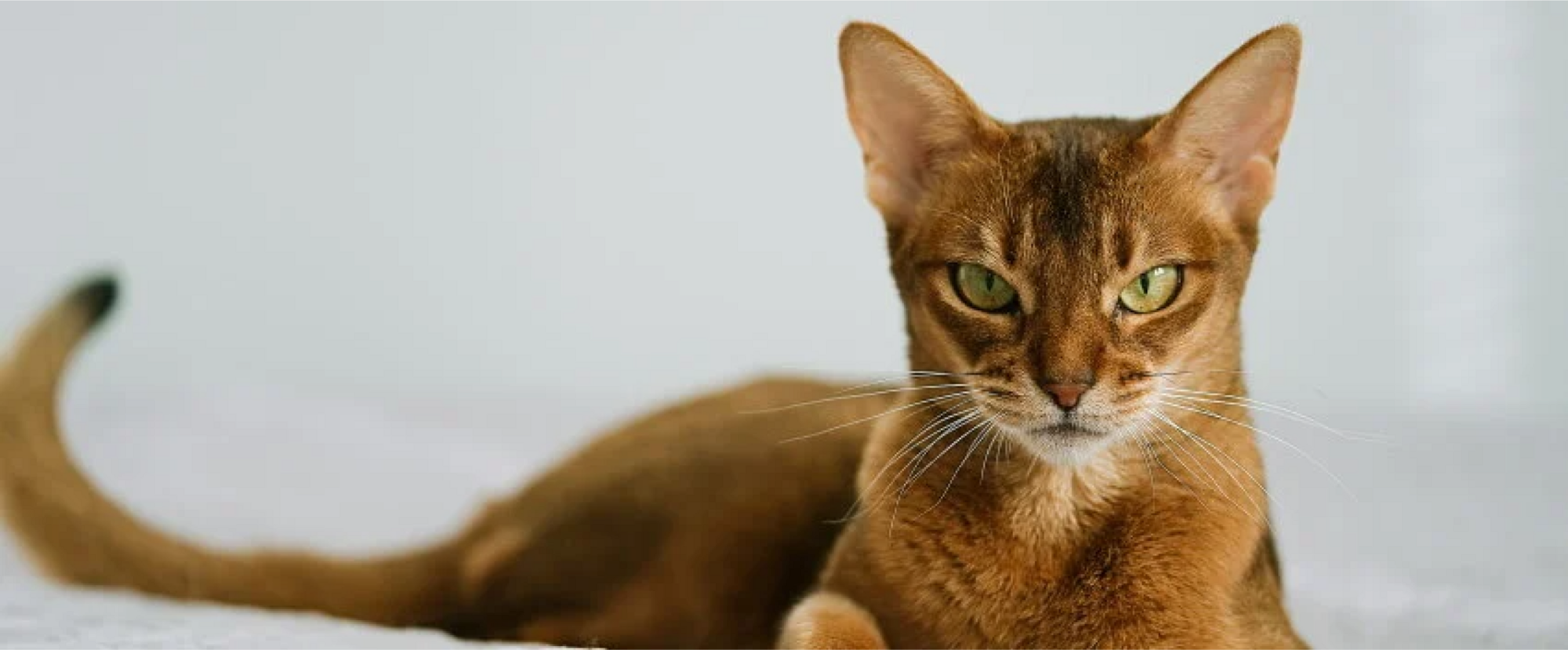
The Abyssinian is a medium-sized cat with a long, lithe body and long, slender legs. Abys have an elegant look about them, with a rounded dark tail tip and a distinctive short, thick, 'ticked' coat (meaning that each individual hair displays two or more different bands of colour) which creates an 'agouti' pattern. Interestingly, there is no 'ticking' on their underside. The ears are large and broad with rounded tips. Abyssinians have expressive eyes rimmed in black, a wedge-shaped head and arched neck. All of these features combine to give them a slender, refined, exotic appearance- almost like theyâve just stepped off the African savanna!
Given the Aby's short coat, its grooming needs are less intense than those of long-haired breeds. At a minimum, weekly brushing is recommended.
Top grooming products for Abyssinian cats:
Abyssinian Personality
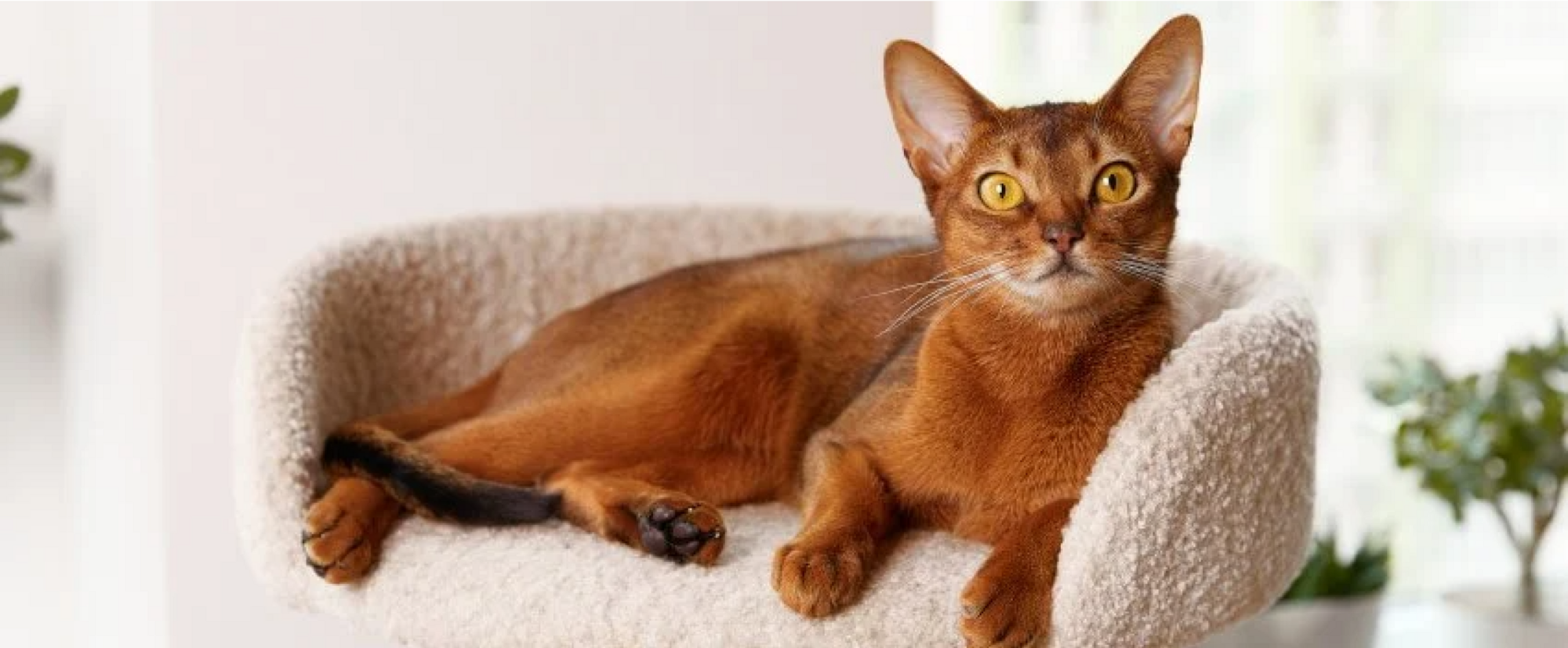
Abyssinians are intelligent, highly active cats that love to play and can be very sociable. They love having the freedom to explore (especially high places!) and have a warm, animated nature that can sometimes border on attention-seeking! Despite this, Abys would rather play than be a lap cat and prefer to show their humans affection on their own terms. Due to their adventurous streak, it's not uncommon for an Aby to get into all the nooks and crannies around the house, so we recommend keeping anything fragile (or potentially toxic) well out of their way!
Abyssinians like to keep busy so are well suited to active households that provide plenty of activity and enrichment. They enjoy interactive play and a varied, stimulating environment with high perches- this breed is well known for their love of heights! With a slow introduction they can learn to get along well with a range of other animals. Due to their intelligence and need for stimulation they are very trainable and most respond very well to lead training.
Top toys and accessories for Abyssinian cats:
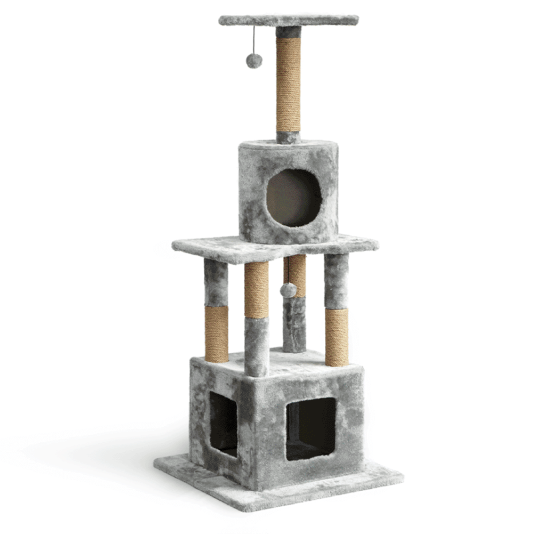
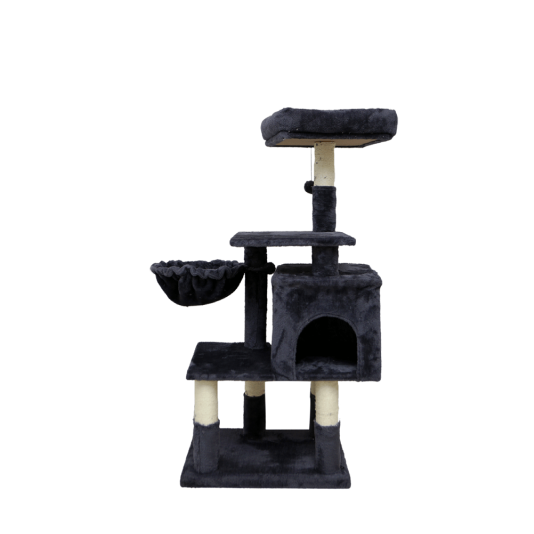
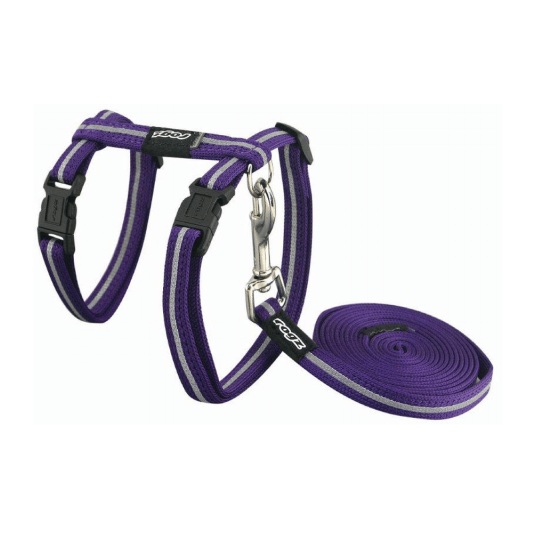
Abyssinian Nutrition
The Abyssinian cat is a unique breed, but is still taxonomically within the domestic feline species, so their nutritional demands don't differ too much from other cats. It's recommended to feed a premium kitten food up until 12 months of age, then controlled amounts of a high-quality adult diet. For indoor cats, an 'Indoor' formulation is recommended, which can help with weight control and reduce stool odour.
Dry food is beneficial for maintaining good dental health, while wet food helps to ensure your Abyssinian is well-hydrated, so in a healthy cat we recommend feeding a mixture of both.
Top dry foods for adult Abyssinians
Top wet foods for adult Abyssinians
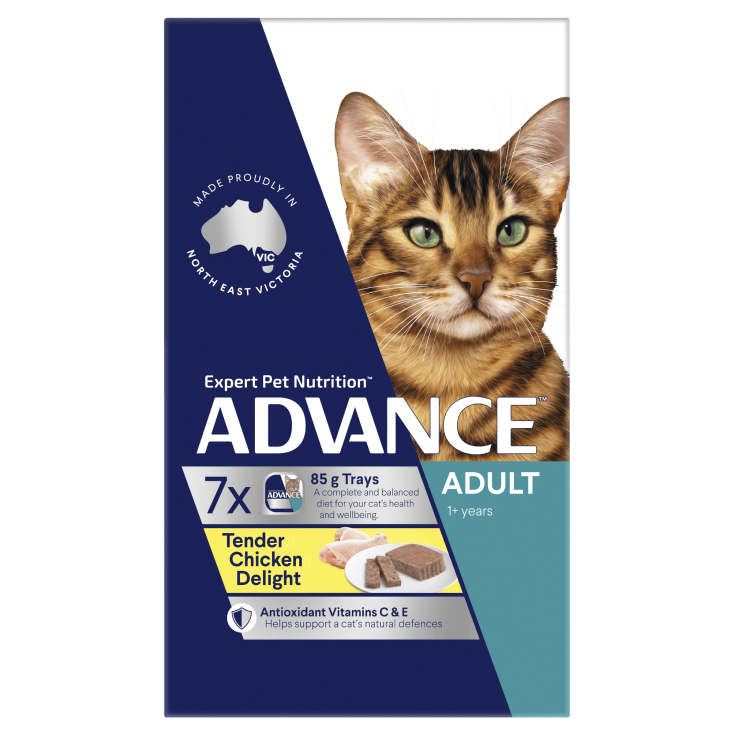
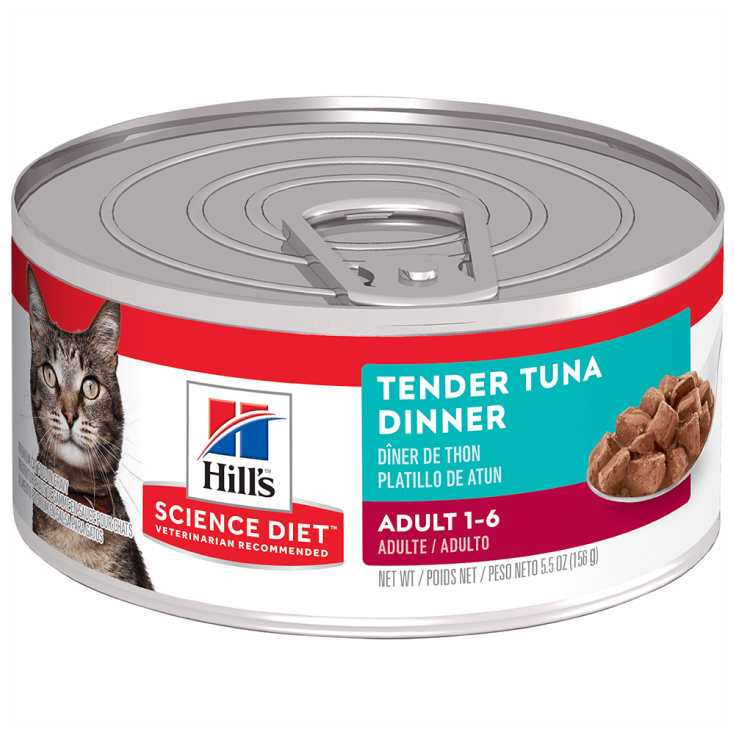
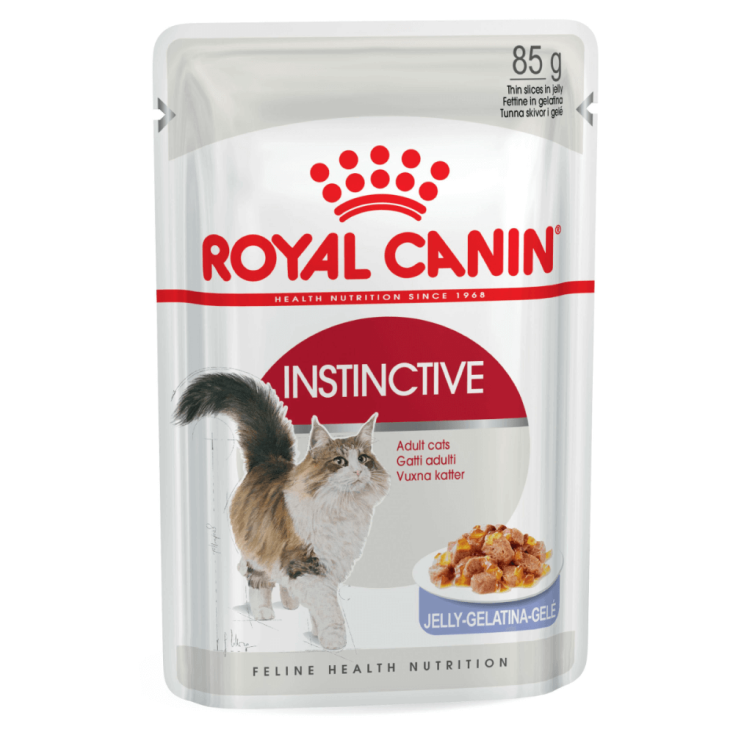
Abyssinian Common Health Concerns
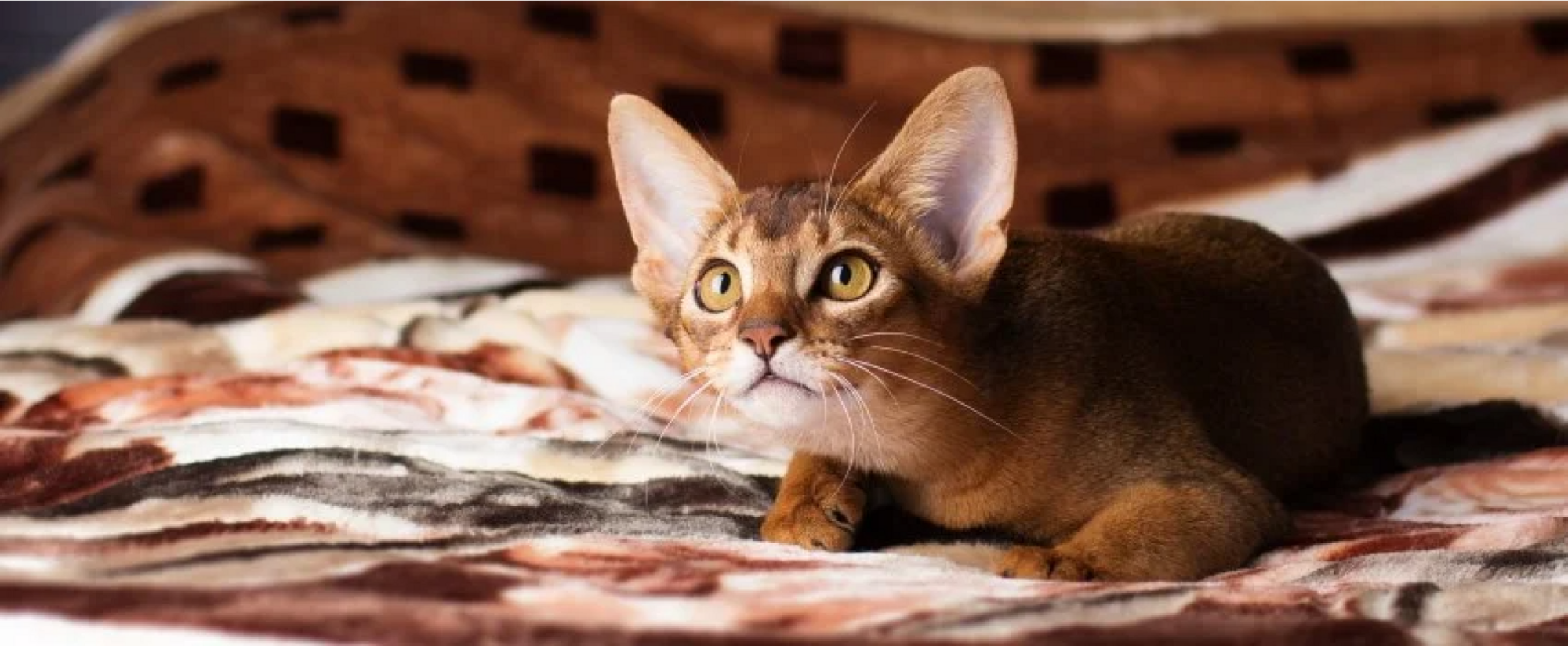
Abyssinians are predisposed to several health conditions. As some of these are genetic, it's recommended to always choose a reputable breeder and ask whether their cats have been screened for inherited diseases.
Pyruvate kinase (PK) deficiency
Pyruvate kinase is an enzyme found in red blood cells which enables the cell to produce energy to survive. If this enzyme is lacking, the red blood cells have a greatly reduced lifespan, leading to an overall reduction of red blood cells in the circulation (anaemia). Signs of chronic anaemia include lethargy, pale gums, reduced appetite and weight loss. In some cases the signs can be very subtle, and occasionally aren't noticed at all until later in life.
This is an inherited recessive condition and genetic testing is available that can identify cats that are affected or carry the gene.
Patella luxation
Abyssinians are genetically predisposed to patella luxation. Most often this condition occurs due to an abnormally shallow groove at the end of the femur (the thigh bone) where the patella (kneecap) usually sits. The patella can then slip in and out of this groove, resulting in intermittent limping, a strange gait, and/or difficulty jumping. This can be corrected with surgery. Affected cats are more prone to developing arthritis in the knee joint.
Renal amyloidosis leading to kidney failure
This is a genetic condition in which normal kidney tissue is replaced by deposits of a protein called amyloid. This build-up of amyloid leads to inflammation of the kidneys and reduced kidney function. This eventually results in kidney failure.
Signs of kidney disease include loss of appetite, vomiting, and increased drinking and urination. Kidney disease is best diagnosed via blood tests and ultrasound and while there is no cure, early diagnosis often offers the best chance of slowing the progression of the disease.
Renal amyloisodis often becomes apparent between 1 and 5 years of age, so regular blood testing for Abyssinians is recommended.
Looking for more information on kidney disease? Read our veterinary written article Kidney Disease in Pets.
Progressive retinal atrophy
This is another incurable inherited condition affecting some Abyssinians. It leads to degeneration of the retina, a structure at the back of the eye, beginning as night blindness and in most cases progressing to total blindness. Abyssinians can get one of two forms of this condition: in the first, the genetic mutation causes photoreceptors of the retina (referred to as "rods" and "cones") to start to degenerate at as early as 4 weeks of age, resulting in a loss of vision by 12-16 months of age. There is also a later onset form of the condition in which signs are first seen at around 1.5-2 years of age. Genetic testing is available for both forms.
Fun Facts
- While there are a range of possible Abyssinian coat colours, the reddish-brown hue (known as 'ruddy' or 'usual') is the dominant colour genetically
- Most kittens are born with dark coats that lighten with age
- The Somali (a long-haired Abyssinian) is considered a separate breed and only started to be bred intentionally in the 1960s
- Other animals that display a similar ticked coat include some rabbits, hares, and the suitably named guinea pig-like agouti
Further Reading
Want to know more? Check out our Discover Page for more tips on keeping your pets happy and healthy.